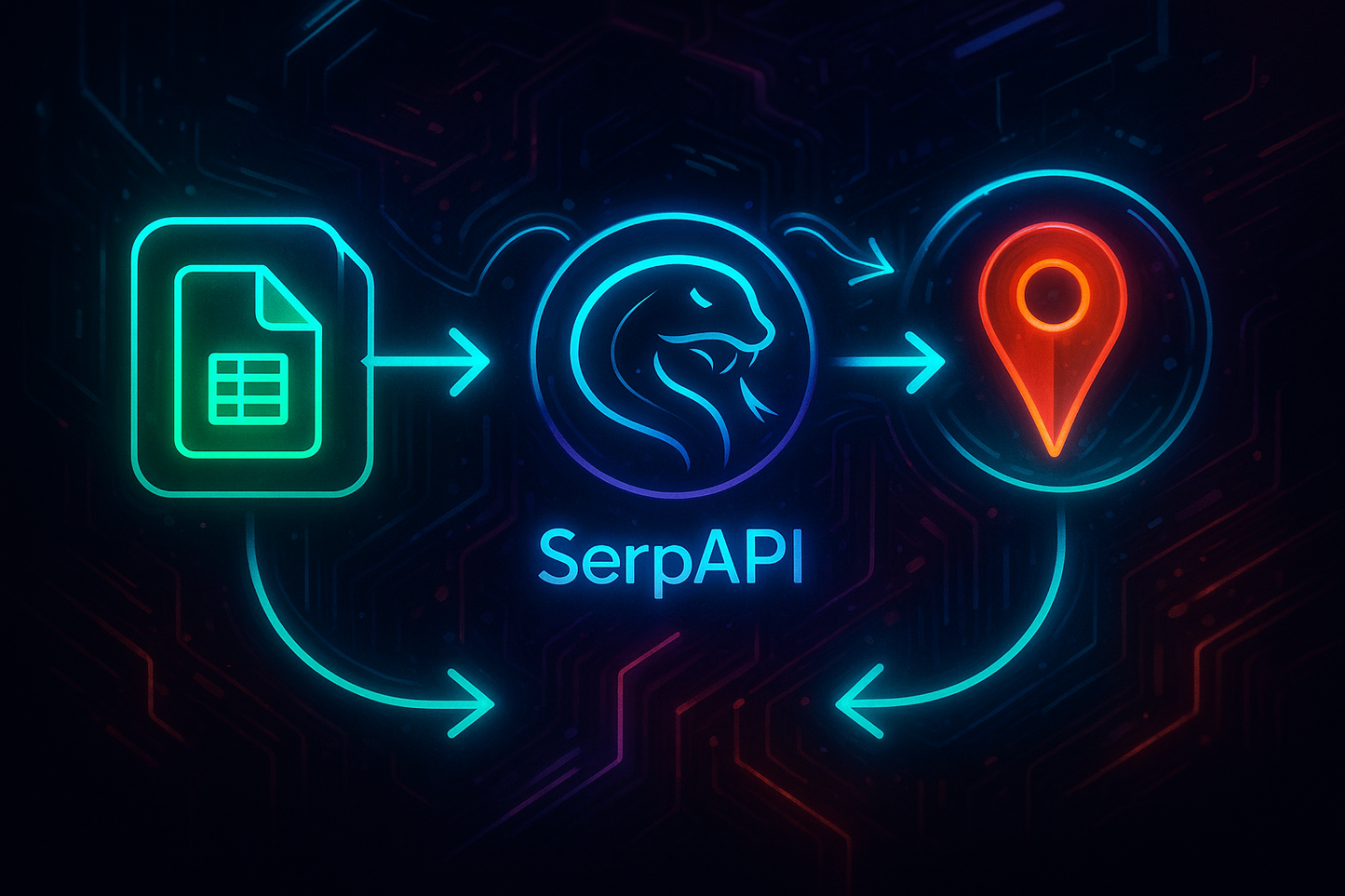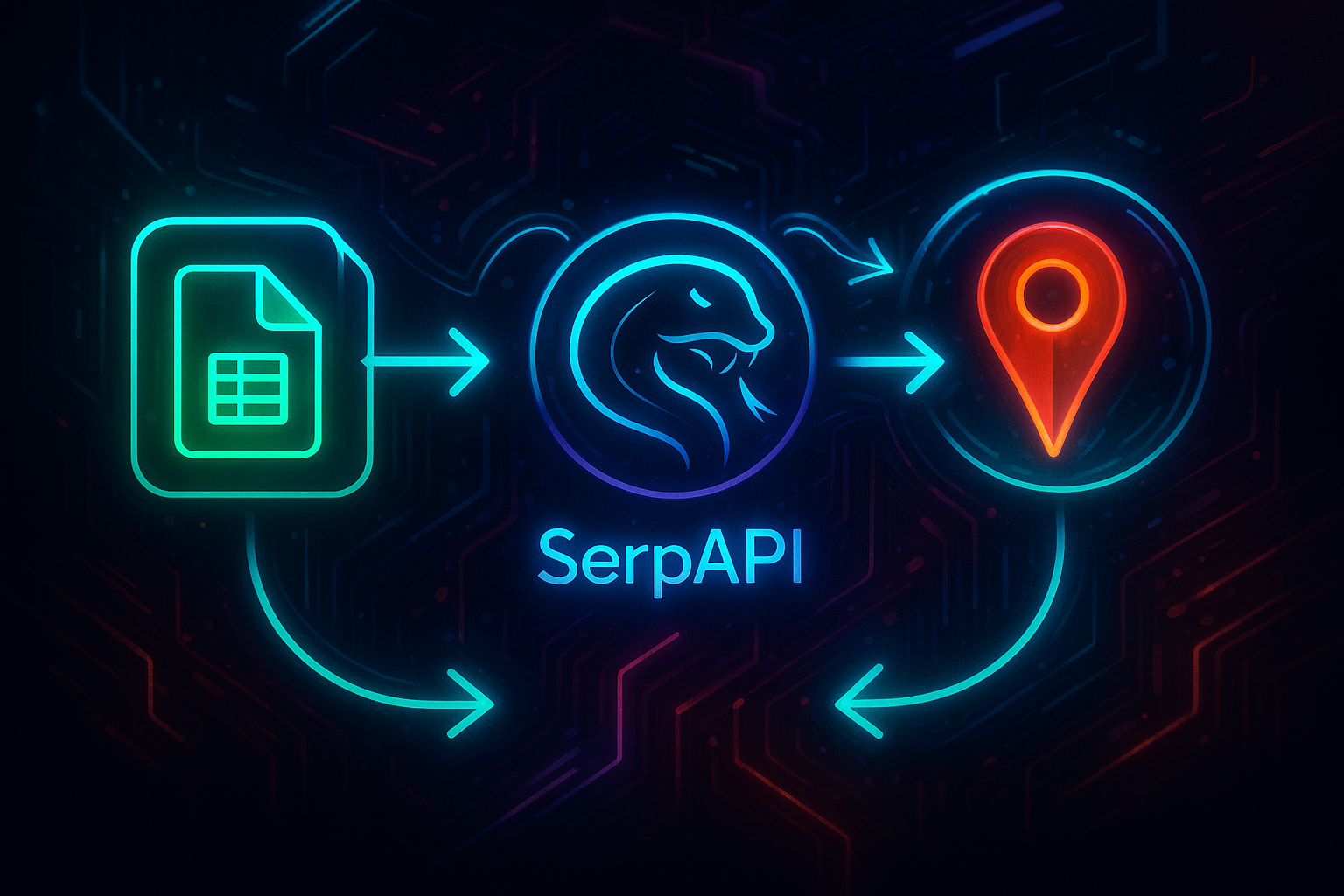Google Maps Scraper Pro
Google Maps Scraper Pro
Couldn't load pickup availability
This automation turns any list of Google Maps searches into a continuously refreshed leads database. It reads your search URLs from Google Sheets, extracts the keyword and geo parameters, scrapes Google Maps results through SerpAPI with full pagination, merges the batches, de-duplicates by place_id, and appends/updates rich business data back into a Results sheet (position, title, phone, website, rating, reviews, address, coords, photos/reviews links, and more). It can run hourly or on demand, and marks each input row Success/Error so operators see status at a glance.
How it works
-
Schedule or manual trigger: Runs hourly or via a manual start for testing.
-
Source list in Sheets: Reads a sheet of Google Maps search URLs. A Set step parses keyword and ll/geo from each URL.
-
SerpAPI pagination loop: Requests Google Maps results, follows pagination links, and extracts the
startoffset for the next page. -
Batch merge + transform: Collates
local_resultsfrom all pages, normalizes fields, and filters out empties. -
De-duplication: Removes duplicates by place_id.
-
Append/Update to Sheets: Writes to a Results sheet using appendOrUpdate keyed on place_id; then flips the source row Status to Success or Error.
Business value
-
Time saved: Replaces ad-hoc scraping and manual copy/paste with a zero-touch pipeline.
-
Lowered error risk: Deterministic pagination, structured transforms, and ID-based de-dupe ensure clean records.
-
Always up to date: Hourly schedule keeps results fresh without rerunning exports.
-
Ready to activate: Output schema (phone, website, ratings, etc.) drops straight into outreach, enrichment, or mapping workflows.
Ideal for growth teams, local SEO agencies, and sales ops needing scalable, reliable Maps prospecting.
Standing up a resilient Maps scraping process with pagination, schema normalization, and de-duplication typically costs teams dozens of engineer hours, plus ongoing maintenance for changes and throttling. This build delivers a production-ready loop—Sheet-driven inputs, pagination with start, field normalization, ID-keyed upserts, and operator status markers—compressing weeks of effort into a turnkey system that protects data quality and scales with volume.
Share




